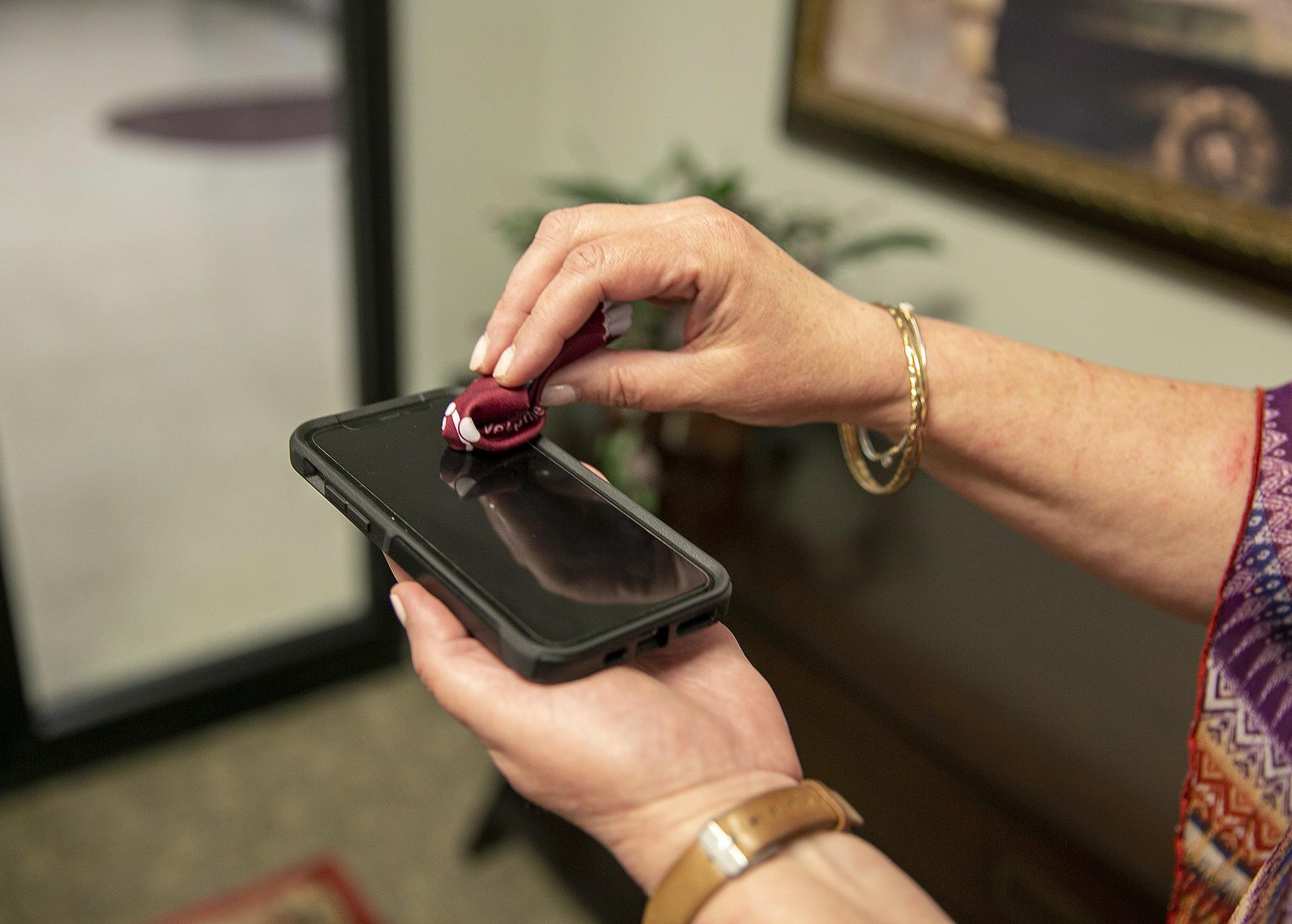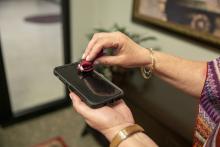Information Possibly Outdated
The information presented on this page was originally released on April 1, 2020. It may not be outdated, but please search our site for more current information. If you plan to quote or reference this information in a publication, please check with the Extension specialist or author before proceeding.
Use care to disinfect electronic devices
STARKVILLE, Miss. -- Unless they are carefully cleaned, phones and handheld devices now carry a greater risk than enabling users to waste time: virus transmission.
The Mississippi State University Extension Service offers information to help owners of these devices properly clean them.
Leslie Woolington, Extension risk management specialist, said the COVID-19 pandemic has made people more careful to wash and sanitize hands frequently, but devices require cleaning, too.
“After being in the grocery store and using hand sanitizer when getting back in the truck, I wondered about my phone, which was in my hands the whole time,” Woolington said. “Like many people, I had not even thought about disinfecting my devices until just recently.”
The Centers for Disease Control and Prevention define cleaning as the removal of germs, dirt and impurities from surfaces.
“Cleaning does not kill germs, but by removing them, it lowers their numbers and the risk of spreading infection,” the CDC states online. “Disinfecting refers to using chemicals to kill germs on surfaces. This process does not necessarily clean dirty surfaces or remove germs, but by killing germs on a surface after cleaning, it can further lower the risk of spreading infection.”
Since electronic devices are sensitive and easily damaged by liquids, cleaning them appropriately can be a challenge, but it can be done successfully. The CDC recommends wearing disposable gloves when disinfecting a device and then throwing them away afterwards.
When cleaning a keyboard and mouse, the first step is to turn off the device and disconnect any external devices that may be plugged in.
“Use a cotton swab or small paint brush to dust off between keys, air vents or around edges of ports, while being careful to avoid any internal contacts,” Woolington said. “Then, moisten a microfiber cloth with 70% isopropyl alcohol.”
For day-to-day cleaning of phones, Woolington said to use soap and water and a lint-free cloth with most of the liquid wrung out. Avoid using paper towels, as they could scratch the surface. Cleaning products and abrasive materials will diminish the fingerprint-resistant, oil-repellent coating applied to some newer iPhones.
With the COVID-19 pandemic underway, it is wise to disinfect hand-held devices using a microfiber cloth moistened with 70% isopropyl alcohol. Gently wipe the phone down and then allow it to air dry. Do not spray any cleaning product directly onto a device, as this can damage internal components. Avoid getting moisture in any openings or ports.
Allow cleaned surfaces to air dry for at least 4 minutes, as this is a key part of the disinfecting process. Wipe off any remaining residue with a microfiber cloth. Make sure no moisture is visible on the surfaces of the product before it is turned on or plugged in.
Mariah Morgan, assistant Extension professor in the MSU Center for Technology Outreach, said that since the process for cleaning smart phones is a bit different, prevention is the best course of action.
“If possible, don’t take the phone into places where it can be contaminated, including stores where you are touching items and then touching your phone,” Morgan said. “If you can, leave your phone in the car and disinfect your hands before touching it again.”
Clorox wipes can be used in place of isopropyl alcohol on Apple products, but it is important to wipe gently and allow them to air dry. Wear disposable gloves or wash hands when done to avoid recontaminating the surface of the phone.
“Do not use bleach or any chlorine-based cleaner, ammonia-containing products such as Windex, any peroxides, or any solvents such as paint thinner or acetone,” Woolington said.
Similar cleaning steps can be used on other electronic equipment such as copiers, scanners and printers, but be sure to follow manufacturers’ specific recommendations.








